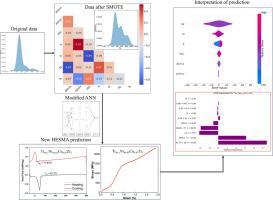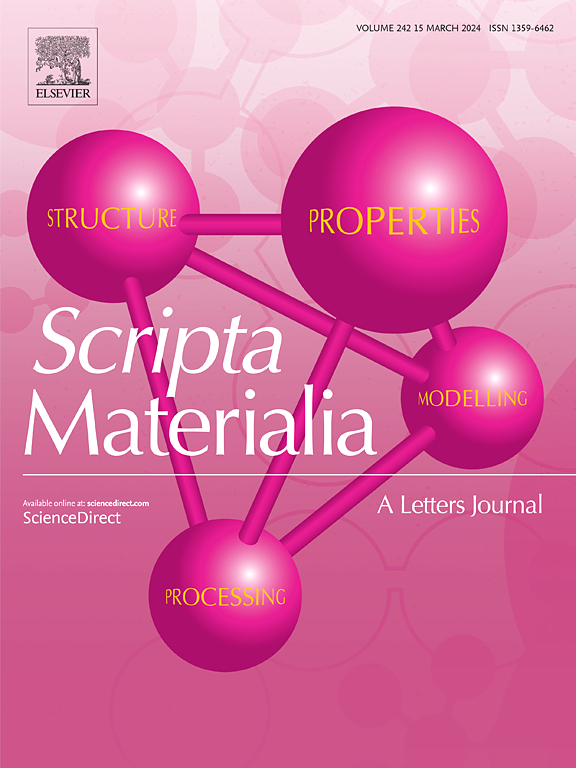Materials Informatics approach to design new high-entropy shape memory alloys
IF 5.6
2区 材料科学
Q2 MATERIALS SCIENCE, MULTIDISCIPLINARY
引用次数: 0
Abstract
The current study uses a materials informatics approach to design new high-entropy shape memory alloys (HESMAs). The two-stage Synthetic Minority Oversampling Technique (SMOTE) was used to enhance the dataset. Several machine learning models are trained and tested to predict martensite start temperature (Ts). The trained ML models are used to select new potential compositions of HESMAs. A modified Artificial Neural Network (ANN) model shows a testing R2 score of 0.89 and predicted the new alloys transformation temperature comparable to the experimental data. The effect of material descriptors on the prediction of Ts is interpreted using SHAP and LIME. The global interpretation of the test dataset is done using SHAP and identifies that δ and VEC positively affect the mean SHAP value for the studied dataset. The DSC data shows the martensitic and austenite transformation, and the compression stress-strain diagram confirms the typical detwinning behaviour of shape memory alloys.

设计新型高熵形状记忆合金的材料信息学方法
目前的研究使用材料信息学方法来设计新的高熵形状记忆合金(HESMAs)。采用两阶段合成少数派过采样技术(SMOTE)对数据集进行增强。几个机器学习模型进行了训练和测试,以预测马氏体开始温度(Ts)。训练后的ML模型用于选择新的hesma潜在组合。修正后的人工神经网络(ANN)模型的测试R2值为0.89,预测的合金相变温度与实验数据相当。材料描述符对Ts预测的影响用SHAP和LIME进行了解释。使用SHAP对测试数据集进行全局解释,并确定δ和VEC对研究数据集的平均SHAP值有积极影响。DSC数据显示马氏体和奥氏体相变,压缩应力-应变图证实了形状记忆合金的典型脱孪生行为。
本文章由计算机程序翻译,如有差异,请以英文原文为准。
求助全文
约1分钟内获得全文
求助全文
来源期刊

Scripta Materialia
工程技术-材料科学:综合
CiteScore
11.40
自引率
5.00%
发文量
581
审稿时长
34 days
期刊介绍:
Scripta Materialia is a LETTERS journal of Acta Materialia, providing a forum for the rapid publication of short communications on the relationship between the structure and the properties of inorganic materials. The emphasis is on originality rather than incremental research. Short reports on the development of materials with novel or substantially improved properties are also welcomed. Emphasis is on either the functional or mechanical behavior of metals, ceramics and semiconductors at all length scales.
 求助内容:
求助内容: 应助结果提醒方式:
应助结果提醒方式:


